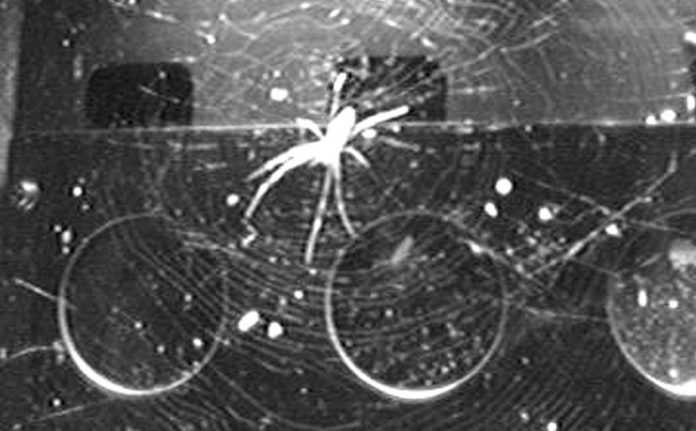A study with two arachnids has revealed that these intelligent arachnids can orient themselves with light in a gravity-free environment in order to build cobwebs in space. It is the first research that has shown conclusive results on how arachnid behavior changes under such adverse conditions.
For several decades, many scientists have conducted countless gravity experiments with spiders: they have hung weights on them, put them in a centrifuge, forced them to build their cobwebs horizontally and spinning. All of these research suggests that gravity is an important factor in the construction of the web, but none answered the question whether spiders can construct them in a zero-gravity situation and, if yes, how the environment would affect their work.
A team of researchers from Switzerland and the United States tried to find answers to these questions after sending a couple of spiders into space in 2011. Previously, other scientists had also transported spiders into space, but research conducted 9 years ago was the first to show such conclusive results on the subject and to pass with just a mishap.
During that experiment scientists took a picture of the cobwebs every five minutes, while the lights on the araneids were turned on and off every twelve hours, simulating daylight. Once subjected to this environment, the male managed to survive zero gravity for 65 days and was still alive after returning to Earth, while the female built 34 cobwebs and changed skin three times. Both arachnids showed record results with respect to previous investigations carried out in space.
- Does This Mean We Stopped Being Animal and Started Being Human Due to ‘Copy Paste’ Errors?
- The One Lifestyle Choice That Could Reduce Your Heart Disease Risk By More Than 22%
- Aging: This Is What Happens Inside Your Body Right After Exercise
- Immune-Boosting Drink that Mimics Fasting to Reduce Fat – Scientists ‘Were Surprised’ By New Findings
- Gun Violence in America: What They Don’t Talk About at the Debate
After analyzing all these photos, the scientists made a surprising discovery that they described in their article that was recently published in The Science of Nature. Once subjected to normal gravity and regardless of whether the lights were on or off, the spiders consistently built asymmetrical webs and constantly looked down when they sat in the center, the authors point out.
“We further conclude that visual stimulus from the direction of light can serve as an orientation guide in the absence of gravity,” they wrote.
Meanwhile, in space, the cobwebs were more symmetrical, although when there was light, the spiders used it as a reference point to continue their construction.
“We would not have guessed that light would play a role in the orientation of spiders in space. That arachnids have a support system for guidance like this, seems surprising (…),” said Basel University biologist Samuel Zschokke.
